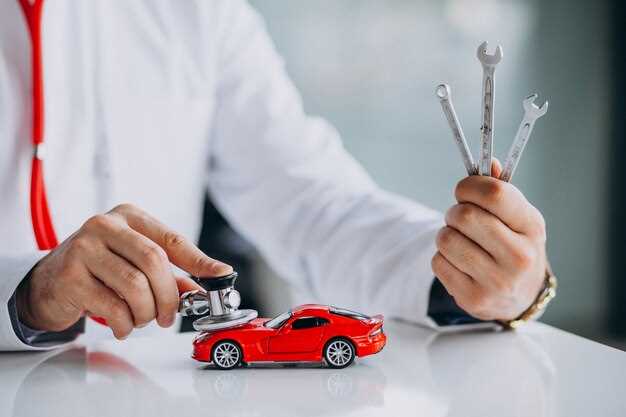
When it comes to car modifications, many enthusiasts seek to enhance their vehicles while staying within legal boundaries. Understanding the regulations surrounding vehicle modifications is crucial, as it helps prevent potential fines, penalties, or even issues with insurance coverage. This article will explore a variety of legal car modifications that can improve performance, appearance, and comfort without running afoul of the law.
Some modifications are universally accepted, such as upgrading your car’s wheels or installing a new exhaust system. These enhancements can boost performance and aesthetic appeal, provided they adhere to local emissions and safety regulations. Additionally, modifications such as improving your vehicle’s sound system or adding interior accessories do not typically face legal scrutiny and can significantly elevate your driving experience.
Moreover, understanding state-specific laws is essential when considering modifications. While certain changes may comply with federal standards, state regulations may introduce additional restrictions. Therefore, it’s important to research local laws regarding modifications, keeping in mind that compliance not only ensures the legality of the vehicle but also enhances safety on the road. This guide aims to equip you with knowledge about the modifications that can be made legally, allowing you to personalize your vehicle confidently.
Understanding Local Laws on Vehicle Modifications

Before making any modifications to your vehicle, it is crucial to understand the local laws that govern such changes. Regulations vary widely by state, city, and even by the type of vehicle. Some modifications may be permitted, while others could result in penalties or render your vehicle illegal for road use.
First, familiarize yourself with your local Department of Motor Vehicles (DMV) or equivalent authority, as they typically provide detailed guidelines relating to vehicle modifications. This includes information on acceptable changes regarding emission systems, noise levels, and safety features. Many jurisdictions have specific rules about lift kits, lowering springs, and exhaust systems that must be adhered to.
Next, consider modifications that can affect your vehicle’s compliance with safety and emissions standards. For instance, removing or altering catalytic converters could lead to significant legal issues as it violates environmental protection laws. Similarly, changes to lighting–including the color and type of headlights–often have specific regulations aimed at ensuring visibility and safety on the road.
In addition to state laws, local ordinances may impose further restrictions on modifications. Urban areas often have stricter laws concerning noise pollution, which can impact the legality of modified exhaust systems. Checking with local city or municipal regulations is essential, as this could affect the modifications you wish to implement.
Consulting with a legal expert or automotive professional familiar with local laws can provide clarity on what modifications are permissible. This can save you time and resources, preventing costly mistakes or legal battles down the road. Additionally, online forums and community groups may offer insights and shared experiences related to modifications in your area.
Finally, keep record of any modifications made, including receipts and documentation of compliance with local regulations. In the event of a traffic stop or inspection, having proof of legality can help mitigate potential issues. Understanding and adhering to local laws will ensure that your vehicle modifications remain within legal boundaries, allowing you to enjoy your vehicle customization without complications.
Safe Upgrades to Enhance Performance Legally
Upgrading your vehicle to enhance its performance can be exciting, but it is essential to ensure that these modifications are legal and safe. Here are several options that can boost your car’s performance without violating any regulations.
One of the most popular and legal modifications is upgrading the air intake system. A high-performance air filter can improve airflow to the engine, enhancing efficiency and power. Ensure that the new filter is compatible with your vehicle’s make and model and complies with local emission laws.
Upgrading the exhaust system is another effective way to enhance performance. A high-flow exhaust system can reduce back pressure, allowing for improved engine efficiency and power output. When considering this modification, check for any noise regulations in your area to avoid issues with local laws.
Reprogramming the engine control unit (ECU) is a legal modification that can provide optimal performance gains. By installing a performance chip or remapping the ECU, you can adjust fuel and ignition settings to extract better performance. Ensure that any modifications comply with emissions standards set by local regulations.
Suspension upgrades, such as performance shocks and springs, can significantly enhance handling and stability. These upgrades improve vehicle responsiveness and cornering ability, making driving more enjoyable while maintaining ride quality. Always verify that these components are compatible with safety regulations in your area.
Finally, consider upgrading your tires to high-performance options. Quality tires can greatly improve traction, handling, and overall safety. Make sure the chosen tires meet the specifications recommended by the manufacturer and are suitable for your local climate conditions.
By choosing these safe upgrades, you can legally enhance your vehicle’s performance without encountering regulatory issues. Always research local laws and regulations before making modifications to ensure compliance and safety on the road.
Cosmetic Changes that Comply with Regulations

When it comes to personalizing your vehicle, cosmetic modifications are a popular choice among car enthusiasts. Fortunately, many of these changes can be made without conflicting with legal regulations. Here are some cosmetic modifications that you can consider, ensuring compliance with local laws.
One of the most common and accepted changes is the installation of aftermarket wheels. Upgrading wheel size is generally permissible as long as the new wheels fit within the original tire well and do not significantly alter the vehicle’s handling or safety characteristics. Ensure that the wheels are compatible with the vehicle’s load rating and that they meet specific safety standards.
Another popular modification is the application of vinyl wraps or paint jobs that enhance the car’s aesthetics. These wraps are removable and typically do not affect the vehicle’s original color or appearance at the time of registration. However, it’s crucial to avoid colors that could be confused with emergency service vehicles, as this practice is often restricted.
Upgrading headlights and taillights is also a viable option, provided that the new lights adhere to local regulations regarding brightness and color. Many jurisdictions allow the use of LED or HID lights that improve visibility without being overly aggressive or blinding to other drivers. Always check that replacements are DOT (Department of Transportation) approved.
Window tinting can significantly enhance the look of your vehicle while providing privacy and UV protection. Regulations regarding the level of tint vary by state, so it is essential to follow the guidelines concerning how dark the tint can be and which windows it can be applied to. Ensure that the chosen tint meets state requirements, including potential reflective properties.
Adding body kits or spoilers can improve aesthetics and aerodynamics. These modifications are generally acceptable as long as they do not obstruct visibility or the vehicle’s essential safety features. Ensure that all modifications are securely installed and do not interfere with the vehicle’s structure or performance.
Finally, custom license plates or frames can add personal flair to your vehicle. However, they must comply with local laws concerning visibility, readability, and the use of certain slogans or images. Always verify that the design does not obstruct any vital information present on the original license plate.
In summary, cosmetic changes can be a great way to express individuality while maintaining compliance with regulations. Always check local laws and standards before proceeding with any modifications to ensure that your aesthetic upgrades are both stylish and legal.





